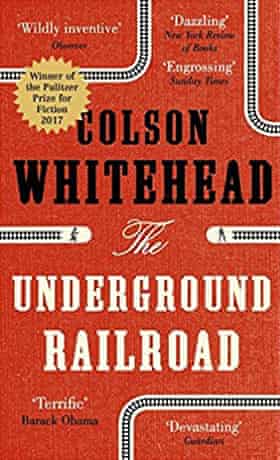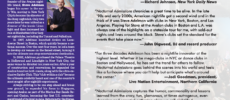
Colson Whitehead's Pulitzer Prize-winning book, The Underground Railroad, offers an excellent example of the relationship required between the protagonist and antagonist to craft a page-turning, stick-with-the-reader story.
The Underground Railroad tells the story of (no spoilers ahead) a runaway slave girl's journey from the plantation she'd been forced to call home across the antebellum South and north toward freedom. The protagonist, Cora, faces many dangers and betrayals by the people she encounters, but the antagonist in the story is slave hunter Ridgeway who has two reasons to pursue her.
This dual motivation is linked to and interwoven with Cora's physical and emotional journey, which bonds the reader to her and keeps them turning the pages.
Ridgeway alone makes for a compelling and worthy antagonist. Ruthless and intellectually and physically powerful, he is believably real. But Whitehead didn't write the story as a head-to-head battle of wits and will between Cora and Ridgeway. He made the story more dynamic by crafting memorable supporting characters for both protagonist and antagonist.
One such character is Homer, a young black boy who acts as Ridgeway's sidekick.
In addition to introducing a new layer of complexity and danger to Cora, the relationship between Homer and Ridgeway allows the reader to see the nuances of Ridgeway's character. He is without a doubt an evil man, and yet we want to understand him. I wondered if he was on some level redeemable.
But the story isn't about Ridgeway. The story is about Cora. It's always about the protagonist. Before Whitehead introduced her real antagonist, he gave us a glimpse of Cora's character, strength, and psychological wound in scenes with antagonistic characters but not the antagonist.
A powerful and interesting adversary and life and death stakes allows and forces the protagonist to reach for the edges of her intellectual, emotional, and physical limits.
It is that dance, that shifting of power that establishes and maintains the rhythm of the story and keeps the reader moving with and wanting more--more of that story and more stories by that writer.
If you want your story to move people and for them to count you among their favorite writers like I count Colson Whitehead among mine, read The Underground Railroad. Study it. Count its scenes. Examine its beats. Be moved by its emotional power. You'll be a better writer for it.
Do you want developmental editing help? Schedule a complimentary call to see if we're a good fit: click here.
Results and Testimonials
Cristen Iris
CI Communication Strategies
2019






I value autonomy within community and am, therefore, an inclusive businessperson. I do not discriminate based on race, ethnicity, country of origin, age, marital status, disability, religious or political affiliation, gender identity, or sexual orientation in any of my activities or operations. Whenever possible, I avoid working with people and vendors who demonstrate a disregard for the dignity, safety, and overall well-being of any other person or group. My clients and I agree that without intellectual integrity and respect for human dignity, our work has limited value. Therefore, we place the wellbeing of readers in the forefront of our minds and agree to focus our efforts on educating and empowering them.
Copyright 2019 WriteNow, LLC dba CI Communication Strategies. Privacy Policy: Click here to view our full privacy policy. Site Designed by V-Squared Creative.